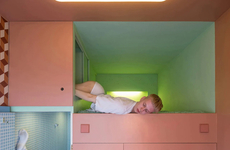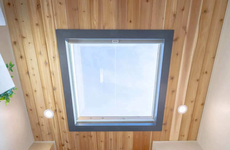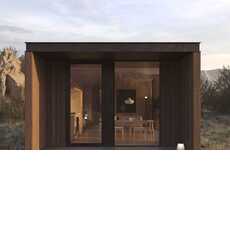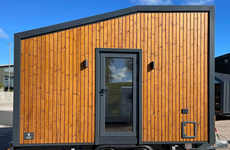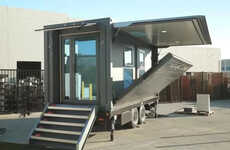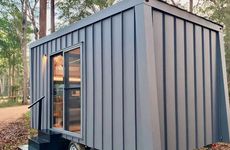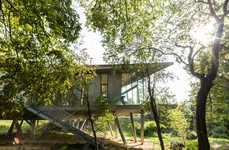
The Micro House by Gabrijela Tumbas Papic is Small and Portable
Meghan Young — March 28, 2014 — Art & Design
References: behance.net
The Micro House by Gabrijela Tumbas Papic, a designer based in Beograd, Serbia, is yet another great example of the less is more belief. Measuring mo more than 22 square meters, it is nevertheless built with everything a person could need to live a comfortable life. Like a two storey loft, it boasts high ceilings in the living area, a smaller second level that acts as the bedroom and right underneath it the kitchen.
Yet what makes the Micro House by Gabrijela Tumbas Papic particularly exciting is the fact that it is suitable in just about any environment. Easily disassembled and transportable, it can be shipped to wherever it is needed most whether that is in urban city areas, in the mountains or by a beach.
Yet what makes the Micro House by Gabrijela Tumbas Papic particularly exciting is the fact that it is suitable in just about any environment. Easily disassembled and transportable, it can be shipped to wherever it is needed most whether that is in urban city areas, in the mountains or by a beach.
Trend Themes
1. Micro Living - The trend towards smaller, more efficient living spaces is disrupting the traditional real estate market and offering opportunities for innovative design and sustainability solutions.
2. Portable Architecture - The trend towards smaller, easily transportable structures is creating opportunities for innovative construction materials and methods.
3. Nomadic Living - The trend towards flexible, location-independent lifestyles is disrupting traditional notions of home ownership and creating opportunities for adaptable and versatile housing solutions.
Industry Implications
1. Real Estate - The real estate industry can embrace the trend towards micro living by creating innovative and sustainable developments that cater to the changing needs and preferences of modern consumers.
2. Construction - The construction industry can embrace the trend towards portable architecture by developing new materials and methods that offer greater flexibility and mobility without sacrificing durability or quality.
3. Hospitality - The hospitality industry can embrace the trend towards nomadic living by offering flexible and adaptable accommodations that cater to the needs of digital nomads and other location-independent travelers.
4.4
Score
Popularity
Activity
Freshness

